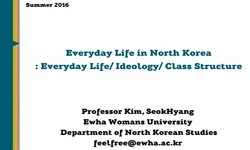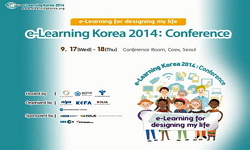The government's financial support project for universities is one of the major sources of funding for university operations and significantly impacts school development. Comparing the financial support policies and specific financial support projects...
http://chineseinput.net/에서 pinyin(병음)방식으로 중국어를 변환할 수 있습니다.
변환된 중국어를 복사하여 사용하시면 됩니다.
- 中文 을 입력하시려면 zhongwen을 입력하시고 space를누르시면됩니다.
- 北京 을 입력하시려면 beijing을 입력하시고 space를 누르시면 됩니다.
https://www.riss.kr/link?id=T15769315
- 저자
-
발행사항
Seoul : Sungkyunkwan University, 2021
-
학위논문사항
Thesis (M.A.) -- Sungkyunkwan University , Department of Education , 2021. 2
-
발행연도
2021
-
작성언어
영어
- 주제어
-
발행국(도시)
서울
-
기타서명
한국과 중국의 주요 대학 재정지원사업 비교분석
-
형태사항
ii, 87 p. : ill. ; 30 cm
-
일반주기명
Adviser: Jangwan Ko
Includes bibliographical references: p. 81-85 -
UCI식별코드
I804:11040-000000161599
- DOI식별코드
- 소장기관
-
0
상세조회 -
0
다운로드
부가정보
다국어 초록 (Multilingual Abstract)
The government's financial support project for universities is one of the major sources of funding for university operations and significantly impacts school development. Comparing the financial support policies and specific financial support projects of Korea and China, this study provided an overview of four university financial support projects currently implemented in the two countries. Moreover, this study analyzes the commons and differences in the two countries' financial support projects and sorts out suggestions for improving and developing university financial support projects in the two countries.
Comparison results indicated that both the Korean and Chinese governments’ financial support projects to universities are insufficient in terms of the diversity of support models and supported universities’ professional development. Insufficient diversity is currently the core financial support problem that both Korea and China need to improve. Simultaneously, China’s university financial support projects still have not solved the support fairness. China’s university financial support needs to be further expanded. In contrast, Korea should develop its support project’s autonomy and make a more flexible policy to the supported universities.
The conclusions of this study are Chinese and Korean governments should learn from each other’s excellent experience: To ensure the support’s fairness, China’s finance support projects need to introduce a competitive system and set up a selection system with a university elimination mechanism. In particular, the scale of financial support can be further expanded if all universities above a certain level are supported by using evaluation criteria such as “basic capacity diagnosis” used in Korea’s National Universities Fostering Project. On the other hand, to increase Korean finance support projects’ autonomy, supported universities should introduce a self-examination and self-evaluation system. Moreover, refer to China’s “Double First-Class” project works with third parties to further rationalize grade evaluation and performance standards.
국문 초록 (Abstract)
대학에 대한 정부의 재정지원사업은 대학 운영의 주요재원 중 하나이며, 학교 발전에 중요한 영향을 미친다. 한중 양국 정부의 대학 재정지원사업은 지금 모두 중요한 개혁기에 있다. 중국...
대학에 대한 정부의 재정지원사업은 대학 운영의 주요재원 중 하나이며, 학교 발전에 중요한 영향을 미친다. 한중 양국 정부의 대학 재정지원사업은 지금 모두 중요한 개혁기에 있다. 중국은 2017년에 중요한 제도적 혁신인 ‘쌍일류’ 건설지원 사업을 본격 시작하고 한국 정부는 2018년부터 대학재정지원사업 재구조화를 실시했다. 두 나라의 개혁시점 접근은 우연의 일치일 뿐 아니라 글로벌한 배경에서 대학의 발전과 고학력 인재의 육성을 국가적으로 촉진하기 위한 필연적인 시점이다. 그래서 본 연구는 양국의 새로운 재정지원사업은 2년간 가동된 뒤 이 시점에 비교분석을 해서 양국 대학재정지원 정책을 정확히 파악하고, 지원사업 간의 공통점과 차이점, 그리고 개혁의 구체적인 내용을 잘 비교했다.
본 연구는 한국과 중국의 고등교육 재정지원의 정책과 현황을 분석하고 양국 정부의 중점 대학재정지원사업을 비교분석해서 양국 고등교육 재정지원 사업의 개혁 과정과 미래의 개선방안을 탐색하는데 목적이 있다.
본 논문의 연구결과는 주로 세 가지 있다. 첫째, 사업의 공통점을 보면 중국과 한국의 대학재정지원 사업들은 지원 방식의 다양성과 지원을 받은 대학의 다양적인 전문화 발전이 부족하다. 둘째, 중국 주요 대학재정지원 사업은 한국의 사업보다 형평성에서 큰 문제가 있다. 985•211 공정사업 뿐만 아니라 개혁 후의 “쌍일류” 사업도 소수의 우수한 대학만 지원한다. 이 지원 목표 때문에 중국 대학 간의 등급화 문제가 너무 심각하다. 셋째, 한국 대학재정지원 사업은 중국의 사업보다재정지원의 자율성이 조금 부족하다. 한국의 주요 재정지원 사업에서 교육부나 지원위원회는 선택, 심사, 감독 등 기준을 결정했다. 대학들은 수동적으로 지원 경비를 받았다.
그래서 두 국가는 같은 다양성 문제를 직면해서 대학 속성에 맞는 가변적 선택 기준과 융통성이 있는 심사 시스템이 설치해야 한다. 형평성을 확보하기 위해 중국 지원 사업은 경쟁 시스템을 도입해야 하고 대학 퇴출 메커니즘을 갖춘 선택제도를 설치하는 필요가 있다. 그리고 한국 지원사업의 자율성을 높이기 위해 대학들은 자주 심사와 평가 제도를 도입해야 하고 중국의 “쌍일류” 사업을 참고하여 서드파티와 합력해서 성적평가와 심사기준을 더욱 합리화한다.
목차 (Table of Contents)
- I. Introduction 1
- 1. The Necessity of the Study 1
- 2. The Purpose of the Study 2
- 3. The Research Questions 3
- II. Literature Review 4
- I. Introduction 1
- 1. The Necessity of the Study 1
- 2. The Purpose of the Study 2
- 3. The Research Questions 3
- II. Literature Review 4
- 1. Current Status of Financial Support for University in Korea and China 4
- A. The Current Status of Higher Education Finance in Korea 4
- B. The Current Status of Higher Education Finance in China 7
- 2. Types of financial support for universities in Korea and China 12
- A. Types of Korean Higher Education Finance 12
- B. Types of Chinese Higher Education Finance 17
- III. Research Method 22
- 1. Methodology 22
- A. Comparative Framework 22
- B. Comparative research process 29
- 2. The Selection of University Financial Support Projects 30
- IV. Comparison of university financial support projects in Korea and China 33
- 1 Major Financial Support Projects in Korea 33
- A. University Innovation Support Project 33
- B. National Universities Fostering Project 38
- 2. Major Financial Support Projects in China 44
- A. Project 211·985 44
- B. “Double First-Class” construction project 51
- 3. Comparison of major financial support projects for universities 57
- 4. Commons and Differences between the two countries’ university financial projects 64
- A. Common grounds 64
- B. Differences 66
- 5. Changes in the university financial support projects in Korea and China 68
- A. Changes in Korea 68
- B. Changes in China 70
- V. Discussion and Conclusions 72
- 1. Discussion 72
- 2. Suggestions for the university financial support projects in Korea and China 75
- 3. Conclusions 77
- References 81
- 논문요약 86











